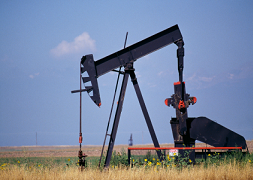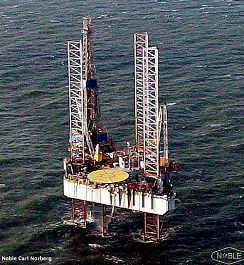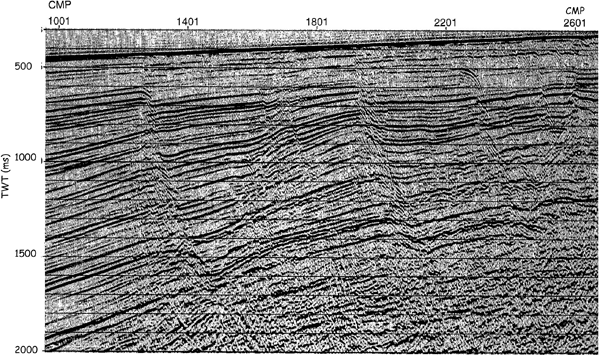Basics

- The search for new reserves of oil and gas is called hydrocarbon exploration.
- As these reserves are located deep underground, geophysicists have invented methods of revealing what is beneath the ground.
- Seismic reflection profiles are one of the most common ways used in the oil industry to identify geological structures that act as oil traps.

What is a seismic reflection profile?

This is a seismic profile or section. It is similar to a geological cross-section, the black lines are reflectors which can be thought of as representing beds. It is a seismic image though, not a true cross-section, notice how the section is not in depth but time.
What is a reflector?
A seismic reflector is a boundary between beds of different properties. There may be a change of lithology (rock type) or fluid fill from Bed 1 to Bed 2.

These property changes cause some sound waves to be reflected towards the surface.
There are many reflectors on a seismic section. Major changes in properties usually produce strong, continuous reflectors as shown by the red arrow in the image above.
For more information on seismic reflections see the ‘Seismic Anatomy’ section.


